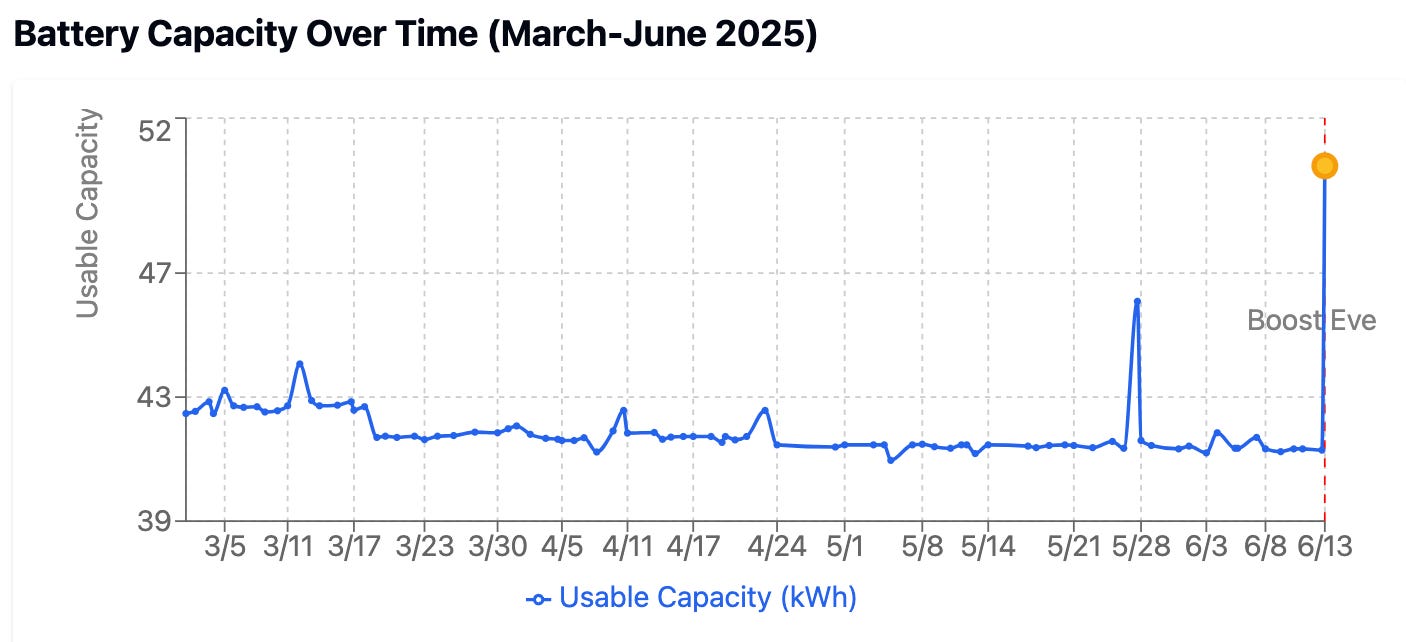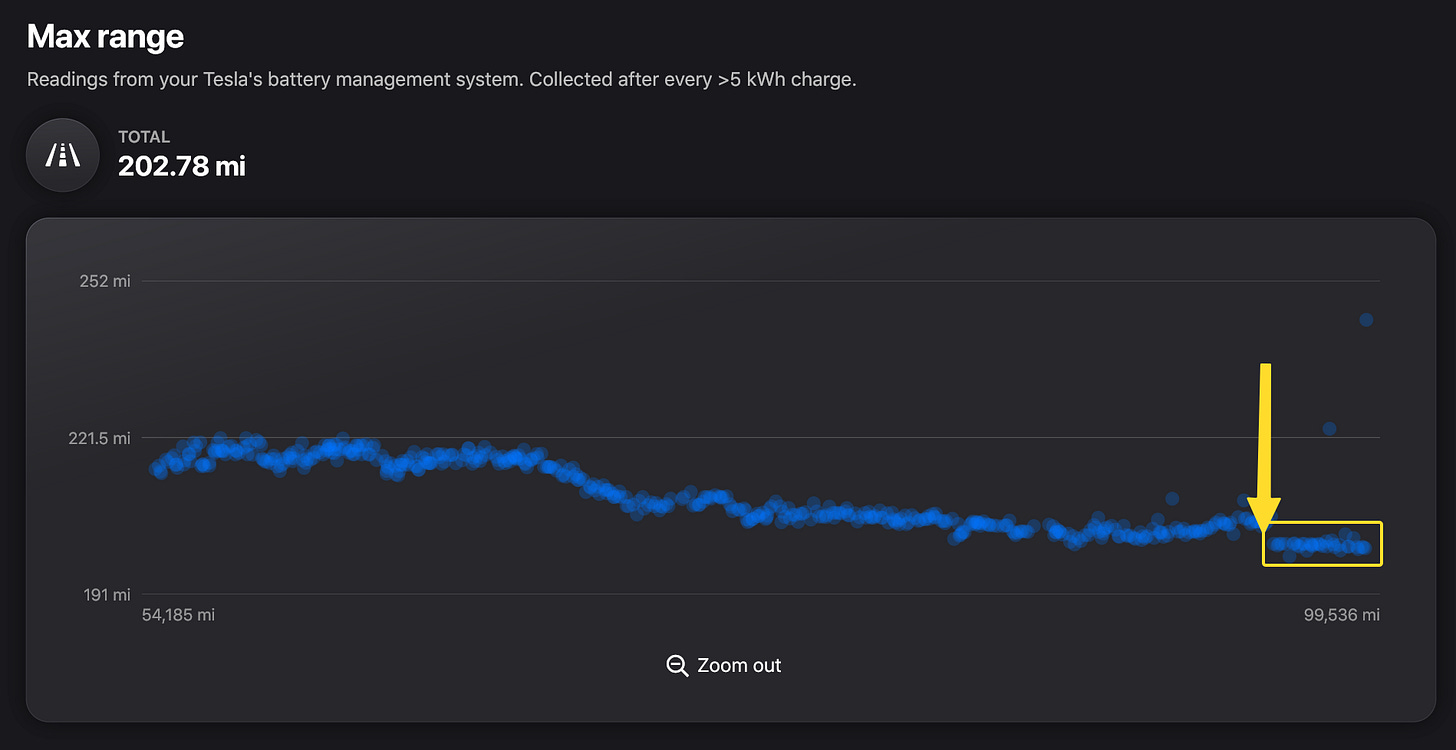Three months ago, I compiled some data from Tessie and crunched the numbers. The time has come to revisit the battery health of my Tesla.
My Tesla is now at 99,085 miles. As a reminder I have a Tesla Model 3 Standard Range Plus (2020). I previously calculated my total degradation of about 18.4% from the original EPA rating (250 miles → 204 miles), with approximately 5.1% occurring during my tracking period of nearly 37,000 miles.
On or around April 24, 2025, I ran a battery health test which essentially drains your battery to 0, forces a BMS recalibration, and charges it back to 100. This essentially, makes the Tesla relearn all the things about your battery.
From April 24 - May 26th, my range was solid between 200 and 201 miles. On May 26th there was an “event” which suddenly spiked the range to 223 miles only for the range to drop back down to 200 the very next day. I have no idea what this event was and why the reading came in hot.
Today, I had a similar shocking reading. The range showed as 244.4 miles (97.8% of EPA rating)! I am kind of shocked and amused. There is no way the battery is at only 2% total degradation.
The chart now looks like this:
Taking out those two anomalies, after the battery health test and the BMS recalibration, the battery is now pretty stable at 200 miles range.
Degradation rate: 1.94% per 10k miles (better than Tesla's 2-3% projections)
Current retention: 80% of EPA rating after 44k miles
Monthly degradation: Only 0.423% per month
Projected lifespan: Will reach 70% capacity around 150k-175k miles
All is on track and the battery is degrading at an excellent rate.
I can only conclude that the "boost events" were just the BMS getting confused during charging and then settling back to accurate readings??
I guess the TL;DR is, after the battery recalibration, the range is now within a single mile at each reading (aside from the wild readings).
On a Tessie chart you can see exactly when the recalibration took place:
Anyway. This was fun for me if not for anyone else.
Cheers,
Joe








